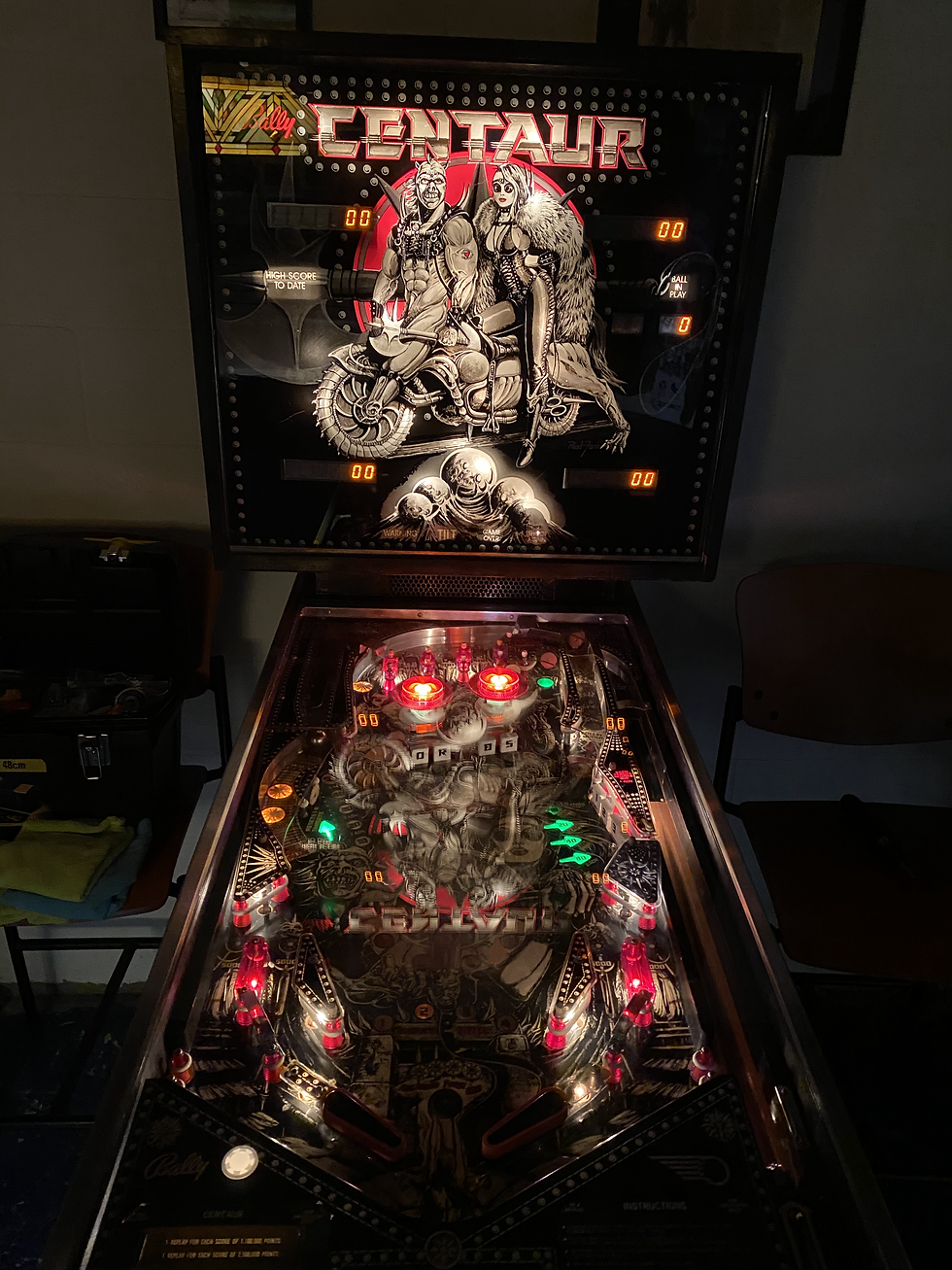
Centaur LEDs and Plastic Replacement

The machine as it had been for about 15 years.

New LEDs, plastics, and rubber installed.

The machine as it had been for about 15 years.
Even though this was a three-day project, I didn't really do much photographic documentation.
Shortly after I put LEDs in my Addams Family machine, in my continuing quest to make my games brighter I decided Centaur was next. For one thing, it has always been a pretty dimly-lit game. For another, these 80s Bally game backglasses tend to crack and peel, and that's largely due to the heat from the incandescent bulbs behind them. I had already repaired the backglass once--and I didn't want to do it again.
But Centaur had been needing some love for quite a while. It needed new rubber--I hadn't replaced it since I got the machine back in 2005 (I know, I know...). I bought the rubber kit for the game, but I had always wanted to replace the plastics as well. Ever since I got the game, the plastics have been yellowed with age (and exposure to heat from the bulbs). A couple of the original pieces were actually missing and had been replaced with black or clear pieces of plastic or, in one case, a clear piece of plastic with an inkjet-printed sticker pasted onto it. Not pretty. So, basically, I was faced with three projects that all involved removing the plastics. I figured I'd wait and do them all at once.
My lovely wife was nice enough to give me a new set of plastics and a complete LED kit for Christmas. I added to that a new Alltek Ultimate Lamp Driver board (a must in order to keep the LEDs from flickering). Thus began my three-day project.
There's really not a lot to tell (for once). The plastics are easy to change, as is the rubber. Along the way, I discovered that the four lane guides at the top of the playfield were falling apart, so I replaced those. I also ordered a brand new set of rubber post caps (black ones) to hold plastics in place--the ones in the game were hard and yellowed with age.
I figured going into this project that the LEDs would take less time than they did on Addams because there were far fewer of them and they (theoretically) should have been easier to get to because the Centaur playfield is a lot simpler.
I was wrong.
First, the bulb sockets (all 555 wedge sockets) in Centaur are CRAP. It's tough to get bulbs out of them, and even harder to get the LEDs in. It is a finger-numbing, time-consuming task.
Second, there are several sockets that are, indeed, hard to get to. For example, you have to remove each of the drop target banks to get to some of the bulbs underneath. Also, the wiring scheme is such that the ground wire for ALL of the bulb sockets is soldered to the bolt that secures the socket to the playfield. That means that you can't remove the socket easily and you would probably have to re-solder the ground connection if you did. So, in other words, you have to bend the socket holder far enough to swap the bulb and bend it back into place afterward. It's a total pain. There was actually one bulb I left incandescent because it was pretty much impossible to get to without major de-soldering and soldering. Only I know which one, and I just don't care.
As always, there was a little bit of additional work to do after the project was "complete." A few of the bulbs refused to light. That turned out to be one bad socket and a couple of bad connectors (2 of the connectors to the MPU board). Once the socket was replaced and the connectors rebuilt, the game was good to go. I installed five new balls as well. (Again, not replaced since I got the game 15 years ago. I know. I KNOW.)
Centaur is much prettier now, and plays super-fast now that the rubber isn't old and brittle. (I'll replace it every year from now on. Promise.)